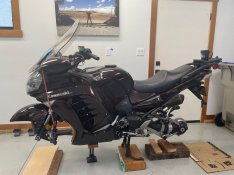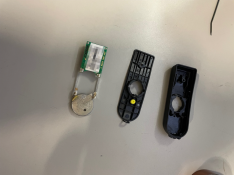I’ve got a 2012 C14. The TPMS batteries have finally died. I took my wheels to a shop and had them remove the TPM sensors. I’ve replaced the batteries in both sensors and I’m getting ready to take them back to the shop for reinstallation.
Naturally, when the shop removed the sensors, no one noted which “direction” the sensors were installed into the wheel.
My question is; Other than ensuring I get the TPM sensor installed into the wheel it came out of, is there any orientation that needs to be observed? The sensor has a rounded end and a flat end. Does one side vs. the other need to be installed in the wheel so it’s “facing” the direction of the wheel spin?
TIA for any help!
~Jeff
Naturally, when the shop removed the sensors, no one noted which “direction” the sensors were installed into the wheel.
My question is; Other than ensuring I get the TPM sensor installed into the wheel it came out of, is there any orientation that needs to be observed? The sensor has a rounded end and a flat end. Does one side vs. the other need to be installed in the wheel so it’s “facing” the direction of the wheel spin?
TIA for any help!
~Jeff




